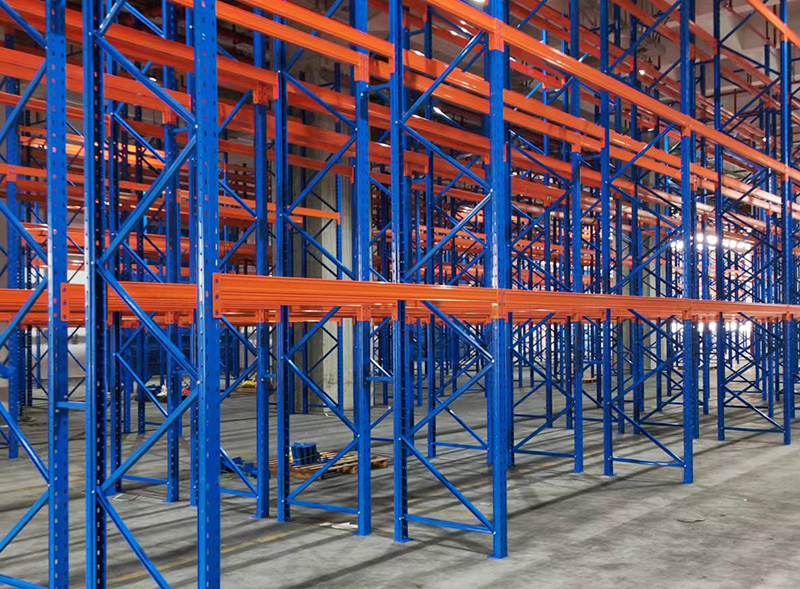In the world of warehousing and logistics, efficiency, space utilization, and safety are paramount. Selective racking systems stand as one of the most popular and versatile storage solutions, offering direct access to every pallet location. However, the performance and longevity of these systems heavily depend on the selective racking system suppliers you choose. Whether you are setting up a new warehouse or optimizing an existing one, selecting the right supplier is a critical decision that impacts your operational efficiency, cost-effectiveness, and safety compliance.
This comprehensive guide delves deep into the ecosystem of selective racking system suppliers, exploring the key aspects you need to consider. We will also address the most common questions and challenges businesses face when navigating this market. By the end of this article, you will be equipped with the knowledge to make an informed decision and partner with a supplier that aligns perfectly with your business needs.

Before we dive into the suppliers, let's briefly understand the product itself. A selective racking system is a type of pallet rack where each pallet is accessible individually. This is achieved through a simple design of vertical frames and horizontal beams, creating bays for storage. Its simplicity, flexibility, and cost-effectiveness make it a warehouse staple.
The role of selective racking system suppliers extends far beyond just selling metal beams. They are partners in your supply chain success. A reputable supplier provides:
High-Quality Materials: Ensuring the racking can withstand specified loads and last for years.
Engineering Expertise: Offering designs that maximize your cube space while adhering to safety standards.
Professional Installation: Proper installation is crucial for system integrity and safety.
Ongoing Support: Providing accessories, replacement parts, and maintenance services.
Choosing an unreliable supplier can lead to structural failures, inefficient space use, safety hazards, and ultimately, higher long-term costs.
The market for selective racking system suppliers is diverse, catering to different needs and budgets. Understanding these categories will help you narrow down your search.
1. Major Manufacturers
These are large companies that design, engineer, and manufacture their own racking systems. They often have extensive research and development departments, ensuring their products meet the highest standards and incorporate the latest innovations. Partnering with a manufacturer often means getting a direct-to-consumer price and deep technical expertise.
2. Full-Service Distributors and Integrators
These suppliers may not manufacture the racking themselves but partner with major manufacturers. They act as one-stop shops, providing not only the racking but also full design services, installation, and often other warehouse equipment like shelving, mezzanines, and material handling equipment. They are excellent for turnkey projects.
3. Value-Added Resellers (VARs) and Dealers
These are smaller, often regional, suppliers that purchase systems in bulk from manufacturers or larger distributors. They typically focus on sales and may subcontract installation. They can be a good source for competitive pricing, especially for standard, smaller-scale projects.
4. Online and Budget Suppliers
A growing segment, these selective racking system suppliers operate primarily online, offering very competitive prices. While they can be suitable for businesses with very tight budgets and straightforward needs, it's crucial to vet their product quality, safety certifications, and post-sale support thoroughly. The lowest price can sometimes come with hidden risks.
Selecting a supplier is a multifaceted process. Here are the five most critical areas to evaluate:
1. Product Quality and Safety Certifications
The integrity of your racking system is non-negotiable. Inquire about the steel grade used (e.g., ASTM A500), the manufacturing process, and the finish (e.g., powder-coating for corrosion resistance). Most importantly, ensure the supplier's products are tested and certified to relevant industry standards, such as:
SEI/ASCE 16: Standard for Load and Resistance Factor Design (LRFD) for Steel Structures.
ANSI MH16.1: Specification for the Design, Testing and Utilization of Industrial Steel Storage Racks.
ISO 9001: Quality Management Systems certification.
Reputable selective racking system suppliers will readily provide certification documents.
2. Design, Engineering, and Customization Capabilities
Your warehouse is unique. A top-tier supplier will offer professional design services, often using advanced 3D modeling software (like AutoCAD). They should conduct a thorough site assessment and provide a detailed layout that optimizes your storage density and workflow. Assess their ability to customize solutions for unusual spaces or specific load requirements.
3. Installation Services and Project Management
Improper installation is a leading cause of racking failures. Determine if the supplier has their own certified, trained installation crew or if they outsource it. An integrated supplier who manages both supply and installation ensures accountability and a smoother process. Ask about their project timeline, safety protocols on site, and post-installation inspection.
4. Reputation, Experience, and References
Experience in your specific industry (e.g., cold storage, automotive, retail) is a significant advantage. Research the supplier's reputation online through reviews and case studies. Any trustworthy selective racking system suppliers will be happy to provide references from past clients with similar project scopes. Contact these references to ask about their experience with the product, service, and support.
5. Total Cost of Ownership (TCO) and Support
Look beyond the initial price quote. Consider the Total Cost of Ownership, which includes:
Initial Cost: The price of materials and installation.
Maintenance: The need for future repairs or replacements.
Longevity: A higher-quality system may have a higher upfront cost but a much longer lifespan.
Warranty: What does the warranty cover and for how long?
After-Sales Support: Do they offer easy access to replacement parts, beam connectors, and safety accessories like guards and column protectors?

Engaging with selective racking system suppliers can bring up several questions and potential pitfalls. Here are answers to the most common FAQs.
FAQ 1: How do I know if a supplier's quote is fair and comprehensive?
A transparent quote should be itemized, clearly separating material, design, delivery, and installation costs. It should specify beam lengths, frame capacities, steel gauge, and finish. Obtain quotes from at least three different types of selective racking system suppliers to compare not just price, but the value and services included.
FAQ 2: What are the red flags to watch out for when selecting a supplier?
Unwillingness to Provide References or Certifications: This is a major warning sign.
Vague or Incomplete Quotes: A lack of detail can lead to unexpected costs later.
Extremely Low Prices: If a quote is significantly lower than others, it often indicates inferior materials, lack of engineering, or unqualified installation.
High-Pressure Sales Tactics: Reputable suppliers are consultants, not pushy salespeople.
No Discussion of Safety or Building Codes: A good supplier prioritizes compliance.
FAQ 3: Can I use my own installer to save money, or should I use the supplier's team?
While you can hire a third-party installer, it is generally recommended to use the installation team provided or recommended by the selective racking system suppliers. This ensures the installers are fully trained on that specific product line. It also simplifies accountability; if something goes wrong, you have a single point of contact rather than a dispute between the supplier and the installer.
FAQ 4: What happens if I need to expand or reconfigure my system in the future?
This is a crucial consideration. Before purchasing, ask the supplier about the availability of additional components and accessories in the future. Systems from major manufacturers are typically easy to expand. Some systems from budget or obscure suppliers may use proprietary connectors, making future expansion difficult or expensive if that supplier is no longer around.
FAQ 5: Who is responsible for ensuring the racking design complies with local building codes and safety regulations?
Ultimately, the responsibility lies with the warehouse owner. However, a professional and ethical supplier will design the system to comply with all relevant local and national standards. They should provide a sealable engineering drawing that you can submit to your local building authority for permitting if required. Always confirm this with the supplier.
The industry is evolving. Leading selective racking system suppliers are investing in:
Sustainable Practices: Using recycled steel and eco-friendly manufacturing processes.
Technology Integration: Designing racks that are compatible with warehouse management systems (WMS) and can support RFID tags for inventory tracking.
Advanced Manufacturing: Utilizing automation to produce higher precision components and faster lead times.
Enhanced Safety Features: Developing innovative safety accessories and telematics to monitor rack health.
Choosing a supplier that is forward-thinking ensures your investment remains viable and adaptable for years to come.
Choosing among the many selective racking system suppliers is a strategic decision that requires diligent research and a clear understanding of your own requirements. Don't base your choice solely on price. Prioritize product quality, engineering expertise, proven experience, and a commitment to safety.
The best suppliers act as consultants, working with you to solve your storage challenges and build a system that drives efficiency, safety, and profitability. By carefully evaluating suppliers against the criteria outlined in this guide and asking the right questions, you can form a partnership that will support your logistical operations and business growth for the long haul.
Invest the time upfront to choose wisely—your warehouse's performance depends on it.
 Wechat
Wechat
 Whatsapp
Whatsapp